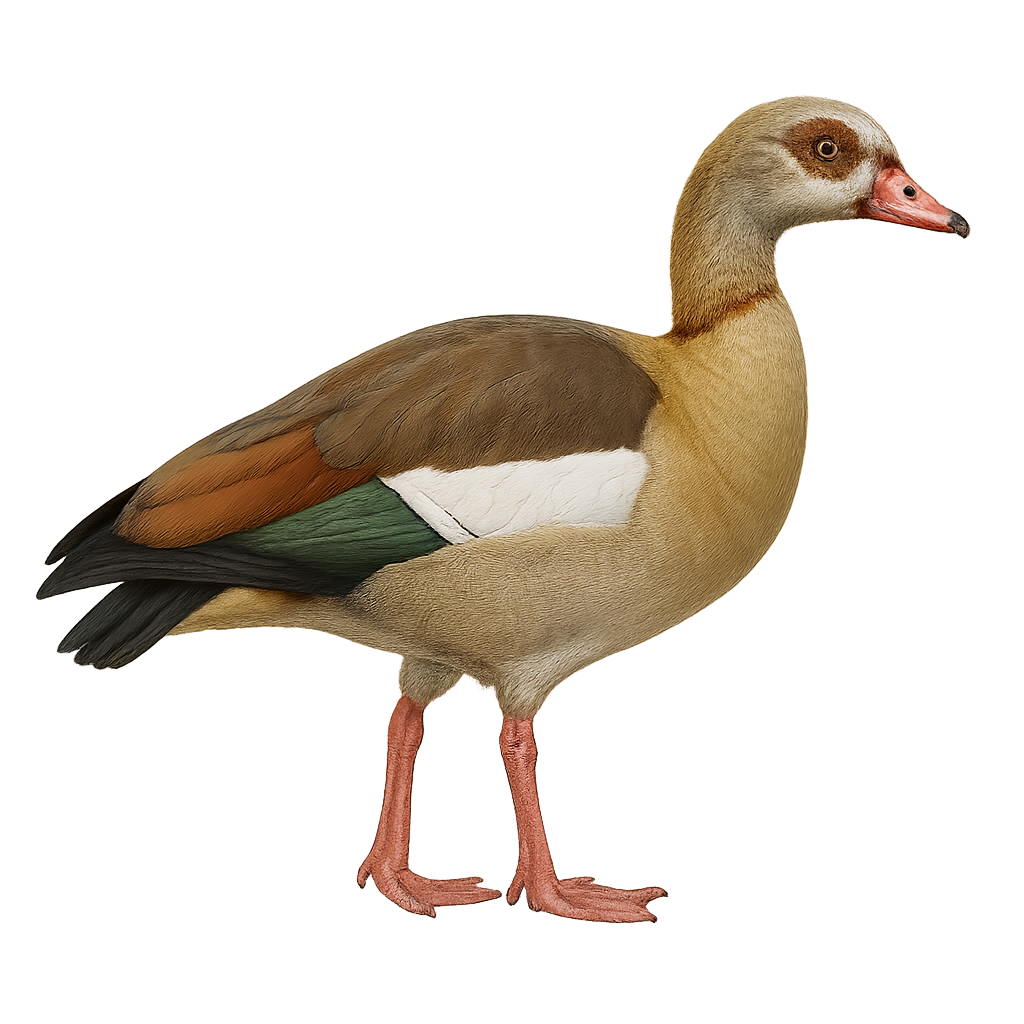Your wildlife photography guide.
Explore the egyptian goose in detail, study its behavior, prepare your shots.
Where to observe and photograph the egyptian goose in the wild
Learn where and when to spot the egyptian goose in the wild, how to identify the species based on distinctive features, and what natural environments it inhabits. The WildlifePhotographer app offers tailored photography tips that reflect the egyptian goose’s behavior, helping you capture better wildlife images. Explore the full species profile for key information including description, habitat, active periods, and approach techniques.
Egyptian Goose
Scientific name: Alopochen aegyptiaca

IUCN Status: Least Concern
Family: ANATIDAE
Group: Birds
Sensitivity to human approach: Suspicious
Minimum approach distance: 10 m
Courtship display: May to August
Incubation: 28-30 jours
Hatchings: June to September
Habitat:
lakes, rivers, marshes
Activity period :
Primarily active during the day, with peak activity in the morning and late afternoon.
Identification and description:
The Egyptian Goose, Alopochen aegyptiaca, is a medium-sized waterbird known for its distinctive brown, white, and black plumage, with red markings around the eyes. Native to sub-Saharan Africa, it has been introduced to various regions in Europe. It prefers habitats near freshwater, such as lakes, rivers, and marshes. This bird is often seen in pairs or small family groups. Although primarily herbivorous, it also feeds on insects and small invertebrates. The Egyptian Goose is known for its territorial behavior, especially during the breeding season. It is capable of adapting to various environments, which explains its growing presence in urban areas.
Recommended lens:
400 mm – adjust based on distance, desired framing (portrait or habitat), and approach conditions.
Photography tips:
To photograph the Egyptian Goose, choose early morning or late afternoon hours to take advantage of soft light. Use a telephoto lens of at least 400mm to capture details without disturbing the bird. Be patient and observe its behavior to anticipate its movements. Flight scenes or social interactions are particularly interesting. Avoid sudden movements and maintain a respectful distance to avoid scaring it.
The WildlifePhotographer App is coming soon!
Be the first to explore the best nature spots, track rutting seasons, log your observations, and observe more wildlife.
Already 1 432 wildlife lovers subscribed worldwide

